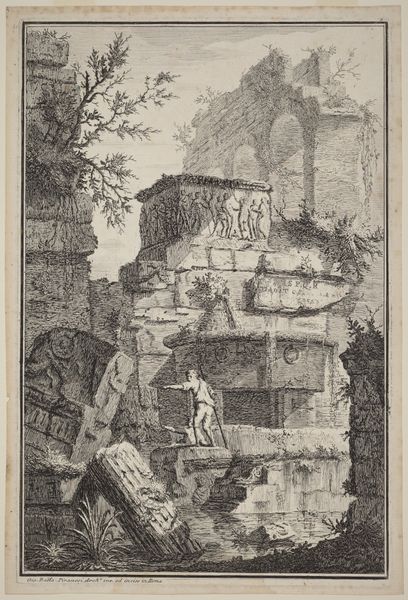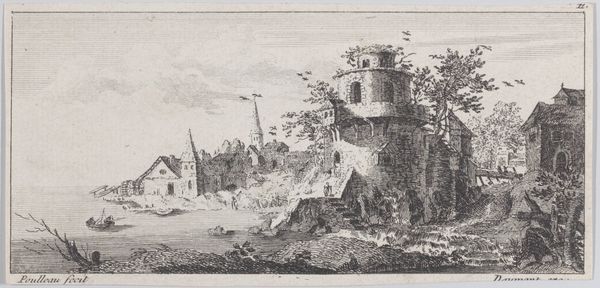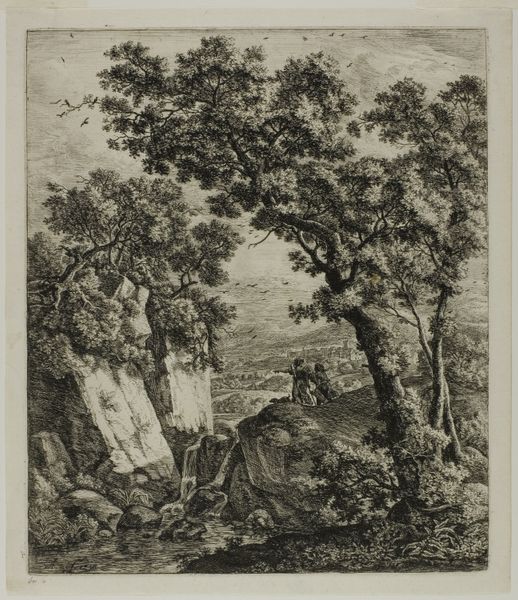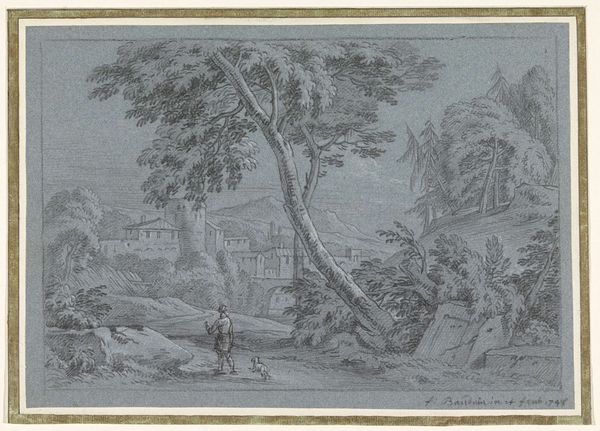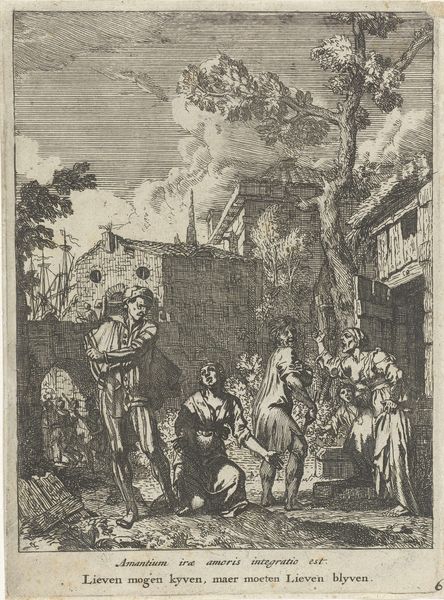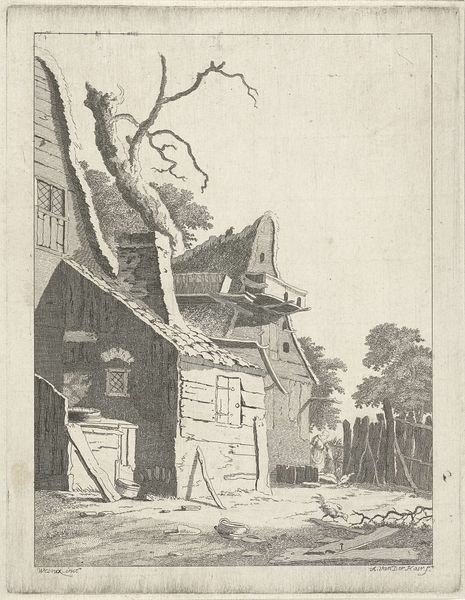
drawing, print, etching
#
drawing
# print
#
etching
#
landscape
#
figuration
#
genre-painting
#
rococo
Dimensions: image: 11 5/8 x 8 7/16 in. (29.6 x 21.4 cm) plate: 12 3/8 x 8 3/4 in. (31.5 x 22.3 cm) sheet: 18 7/8 x 13 3/4 in. (48 x 35 cm)
Copyright: Public Domain
Curator: Welcome. We’re standing before "The Laundress," an etching by François Boucher, completed in 1756. Note the landscape setting, characteristic of the Rococo period, depicting a genre scene of everyday life. Editor: It feels almost voyeuristic, doesn't it? Like stumbling upon a candid moment in a hidden grove. The scratchy, delicate lines give everything a kind of hazy intimacy. Curator: Indeed. Consider the formal composition. The figures are arranged asymmetrically, yet there's a visual balance achieved through the contrasting textures. The rough wood of the washing stall against the softer foliage, for example. The diagonals also guide the eye through the image, linking the laundress to the observing child. Editor: The leaning stall looks about to collapse! And the way the lines get denser to create shade and texture is just fantastic. There’s a real lightness to it despite the implied labor. Makes me wonder what story Boucher's trying to whisper, besides the obvious chore. Is there a playful suggestion here of some amorous glance or something more fleeting? Curator: Rococo art is certainly filled with suggestions of sensuality, often within pastoral scenes. But, this print displays the intersection between social observation and aesthetic construction. The technical facility allows for a representation that acknowledges the everyday labor while idealizing the setting with grace and delicacy. The etched line becomes a tool to construct an experience and invite viewership within those boundaries. Editor: You can almost hear the stream babbling, can't you? I love how such simple lines evoke such an immediate sense of atmosphere. This piece somehow transforms laundry day into something almost dreamy. Curator: That sensation stems from the expert deployment of contrast—the density of linework around the building versus the spareness in the open sky, the detail used to articulate nature against the soft modeling of the figures. The way light falls across the piece directs and withholds information. Editor: It really does dance, doesn't it? Light and shadow, texture and simplicity. The whole piece shimmers in an odd, beautiful way. What a lovely little slice of imagined life. Curator: Ultimately, we confront how Boucher's "The Laundress," merges social observation with painterly style to achieve what Michael Baxandall would call a “period eye”, a visualization enmeshed within period perception and visual strategy. It is this merging which encapsulates both Rococo aesthetic and artistic sensibility.
Comments
No comments
Be the first to comment and join the conversation on the ultimate creative platform.
